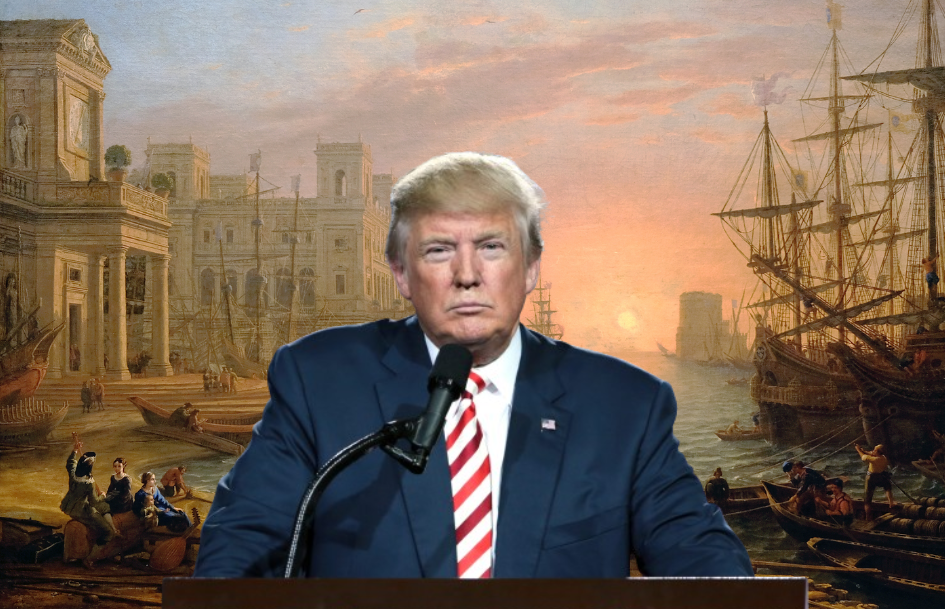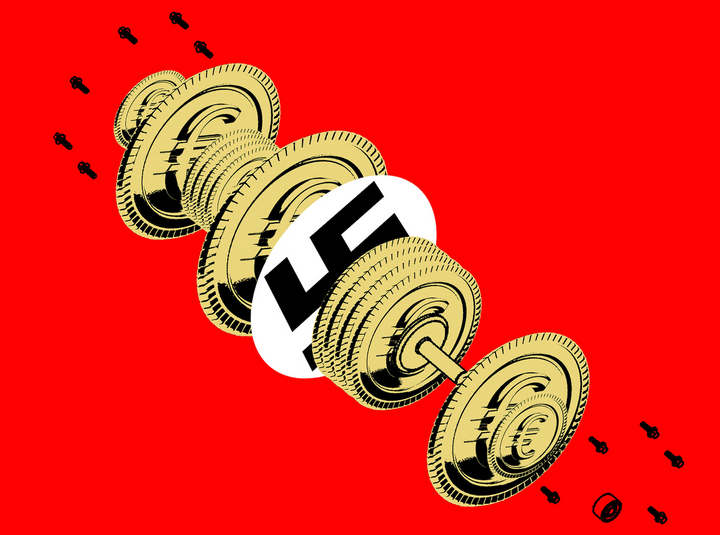A Blast from the Past - The Economic Effects of Trumps Hypothetical Tariffs
Can tariffs be an effective economic policy instrument in the modern U.S. economy? What are the historical and contemporary effects of tariffs on different industries and consumers? How should tariffs be structured to maximise economic benefits while minimising negative consequences?

By: Julian Olsen-Pendergast
In the wake of Donald Trump’s polarising start to his second term, there has been a disruptive shift from the characteristically defining early 21st-century multilateralism to a policy of economic nationalism that is reminiscent of the mercantilist school of thought, with actions such as the withdrawal from the World Health Organisation and threats to NATO allies' sovereign borders. One such shift has been the increased pursuit of economic tariffs. The resurgence of economic nationalism, rooted in historical trade practices, prompts an important question: given their historical role in the U.S. economy, can tariffs be an effective policy instrument today?
Tariffs function as a tax on imported goods, directly impacting businesses that rely on these imports. The objective is to make foreign goods costlier, encouraging consumers to opt for domestically produced alternatives. By doing so, tariffs are intended to stimulate local industries, boost employment, and generate government revenue. Historically, tariffs have been deployed as a protective measure to support nascent industries. Even today, economies such as India, Brazil, and China continue to employ tariffs as a means of fostering domestic growth.
However, the economic landscape has evolved considerably since the 19th century. Global supply chains are now deeply interconnected, and American consumers benefit from lower prices facilitated by free trade. Broad tariff implementation risks driving up consumer costs, effectively functioning as an indirect tax. While tariffs may contribute to industrial expansion and job creation, they also carry trade-offs that require careful evaluation.
Tariffs have historically played a crucial role in shaping the American economy. Alexander Hamilton, one of the foremost economic strategists of the early United States, advocated for tariffs to nurture domestic industries and reduce reliance on British imports. Given the competitive advantage that European manufacturers held in key industries such as steel, textiles, and machinery, tariffs were introduced to elevate the costs of foreign imports and incentivize domestic production.
By the late 19th century, tariff rates in the U.S. often exceeded 40%, contributing significantly to industrial expansion. At one point, tariffs provided nearly 90% of federal revenue, allowing the government to operate without an income tax until the early 20th century. However, these policies did not benefit all regions equally. While the industrial North gained from protective tariffs, the agrarian South faced economic disadvantages, as European countries imposed retaliatory tariffs on American agricultural exports such as cotton and tobacco.
After World War II, the U.S. shifted from a protectionist stance to a global trade leader. With much of the world’s industrial capacity devastated by war, American industries capitalised on free trade to expand their reach. The formation of the World Trade Organisation in 1995 reinforced this commitment to reducing tariffs and fostering international trade.
A more recent example of tariff implementation occurred in 2018, when the Trump administration imposed tariffs on China and other trading partners, providing a contemporary case study on their economic effects. A Federal Reserve analysis of tariffs on washing machines found that domestic producers raised prices, despite not being directly subject to the tariff. This effect extended beyond washing machines, as prices for dryers—unaffected by the tariff—also increased. This highlights how tariffs can translate into hidden costs for consumers.
Beyond household goods, tariffs on industrial inputs had broader economic implications. The 25% tariff on steel imports, implemented in 2018, raised costs for industries dependent on steel, such as the automotive and construction sectors. While employment in the steel industry experienced modest growth, job losses in steel-reliant industries offset these gains, resulting in an overall reduction in manufacturing employment.
One of the significant risks of tariffs is the potential for retaliatory trade measures. In response to U.S. tariffs, China imposed counter-tariffs on American agricultural exports, leading to a decline in demand for U.S. farm products. To offset economic losses faced by farmers, the U.S. government allocated $61 billion in subsidies, nearly matching the $66 billion collected from tariffs on Chinese goods. This raises questions about the overall efficacy of tariff policies, as they may necessitate government intervention to counteract their adverse effects.
While short-term studies emphasise the immediate cost burden on consumers, the long-term impact of tariffs can be more complex. One illustrative example is the 25% tariff on imported light trucks imposed in 1964. Over time, this policy helped American automakers dominate the domestic truck and SUV market, making these vehicles some of the most profitable segments in the industry. Additionally, it encouraged foreign car manufacturers such as Toyota and BMW to establish U.S. production facilities, creating local employment opportunities.
However, tariffs can also reduce competitive pressures. Limited foreign competition in the American truck market weakened incentives for innovation and efficiency, contributing to higher consumer prices and lower product quality. Furthermore, companies often develop strategies to circumvent tariffs, such as shifting production locations or assembling products domestically from imported components to exploit regulatory loopholes.
For tariffs to be a useful economic tool, they must be designed with precision. Rather than serving as a broad protectionist measure, tariffs should be applied strategically to industries where they can genuinely enhance economic resilience. Unselective tariff policies risk raising production costs, reducing market competition, and prompting retaliatory measures from trade partners. If tariffs are to be employed, they should be carefully targeted to ensure they contribute to sustainable industrial growth rather than creating unintended economic distortions.
Tariffs present a complex economic challenge. While they have the potential to bolster domestic industries, encourage investment, and generate government revenue, they can also raise costs for consumers, provoke retaliatory actions from trade partners, and stifle competition. Historical and contemporary evidence suggests that while tariffs can be beneficial in certain circumstances, their broader economic impact depends on their structure and whether they support long-term industrial competitiveness. Given the interconnected nature of the global economy, a nuanced and carefully calibrated approach to tariff implementation is necessary to balance economic growth with consumer and industry interests.


